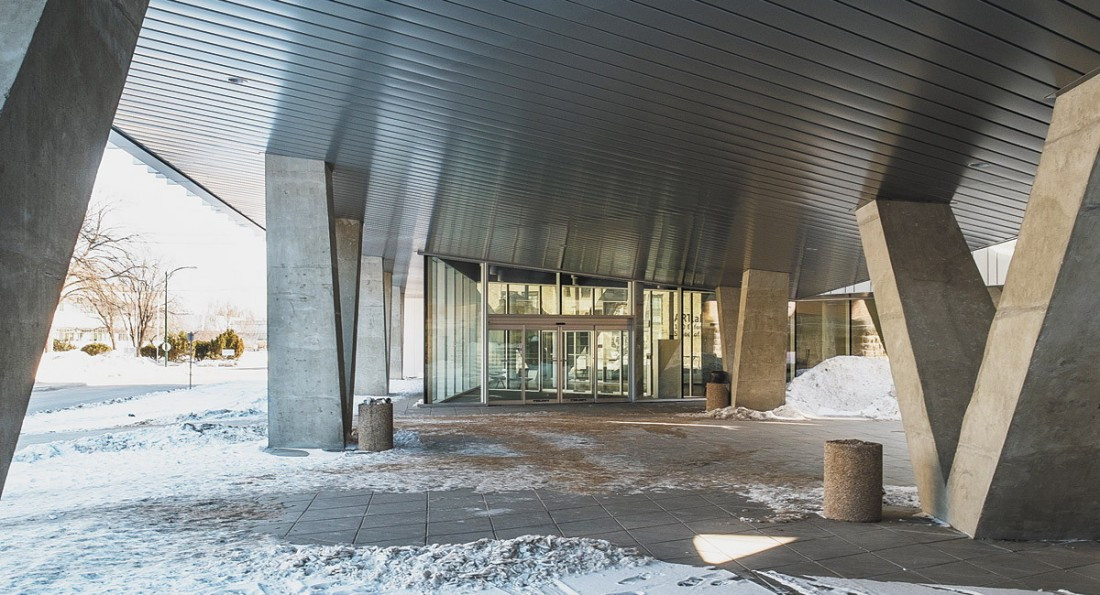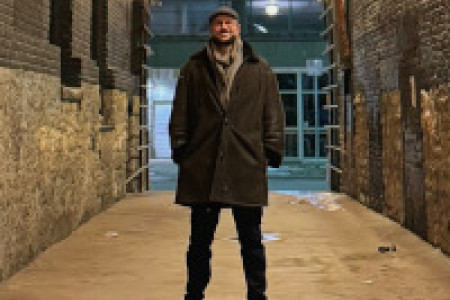If we build it…
Local architecture has the potential to remake Winnipeg
In the last few years, there has been blistering hot architectural prowess in Winnipeg.
Canada’s newest national museum, with its postmodern design, the highly controversial Canadian Museum for Human Rights, is on track to open in September.
Local firm 5468796 (546) was awarded $1 million by the Canada Council for the Arts and Architecture Canada to represent the country at the prestigious international Venice Biennale in Italy in 2012.
That same year, Manitoba Hydro Place was awarded Platinum certification by the Green Building Council of Canada. The award is the highest level bestowed, and highlighted the building’s recognition as the most energy efficient office tower in North America, and the only one in Canada to be awarded platinum status.
In 2012, a collaboration of groups began the Architecture + Design Film Festival (ADFF), the only festival in Canada dedicated to this subject.
The Winnipeg Architecture Foundation (WAF) identifies 1900-1912 and the 1950s-’60s as significant periods of high-intensity architectural growth in the city.
“I think that we are entering a new third wave of innovative design in Winnipeg, echoing those earlier periods of activity,” says Susan Algie, director of the Winnipeg Architecture Foundation.
“As with those earlier periods, we have a group of young architects, trained in Manitoba who are staying and practicing here, often in their own firms. We also have a generation of senior practitioners, who have studied and worked in Manitoba, through the thriving ‘60s and the not-so-active ‘80s.”
“There is a youthful and infectious energy within the design community right now - an energy not seen in several decades,” says Ken Borton, an architect at 5468796. “When it comes to design, Winnipeg really is at the forefront in Canada.”
Jaya Beange, a pre-Masters student in architecture at the University of Manitoba says Winnipeg’s zoning bylaws are more restrictive than those of other, larger, more architecturally-innovative cities.
“One of the biggest contributors to urban vitality is 546, and one of things which is allowing them to do this work is finding ways to put up amazing and creative designs in spite of those bylaws,” Beange says. “They are willing to fight against some of the restrictive notions that prevent a lot of innovative buildings from being erected downtown.”
Janice Laflair, who is from Toronto and has lived here eight years, graduated with her Masters in Architecture from UM in 2011, and now works as an independent architect in Winnipeg.
“546 has done an amazing job of high-profile work coupled with a great job of being bold,” Laflair says.
She adds that if Winnipeg’s current architectural boom is to have a lasting positive impression, the city needs to learn how to market itself to its own citizens and abroad.
“The [CMHR] is a beacon. It’s a talking point. If the rest of the job is done well, like promoting all of the fantastic things about Winnipeg, then the museum will totally help make this a top-notch city.”
She explains many people are unaware of everything going on in Winnipeg.
“There’s this idea in places like Toronto, where people are thinking, ‘Sure, you have a top-notch building, but why the fuck would you go to Winnipeg?’ But people are only thinking that because they haven’t heard of all the amazing things happening here.
“If the [CMHR], inside, provides people with a great experience, it’ll be a winner. If not, word will spread and it will end up a failure.”
Algie says the City’s multifarious architectures can enhance our reputation. “Our great strength is the variety of large and small, commercial, residential, institutional and age of buildings and landscapes,” Algie says. “Winnipeg should really focus on architectural tourism as one of our draws and new facilities like the [CMHR] will be part of that offer.”
“Great cities aren’t made by these singular mega-projects - they certainly might have the most tourist buses outside, but people come back if there is a solid functioning and vibrant city around these museums,” Borton says. “I hope Winnipeg can strive for that.”
Winnipeg’s skywalks are an area where local architects see a possibility for innovation.
“There is excitement in the alleys, and abandoned places - to think of them as treasure troves,” Laflair says. “It’s weird, there isn’t much of a focus on where all the people are. All these people are in the skywalks.”
Algie says WAF is working on an architectural tour of the skywalk system, and is having a session about it during the upcoming ADFF.
“A challenge is that it is primarily private space but should be public space with public art, activities, and good design, like the last stretch completed by Number Ten Architectural Group,” Algie says.
“If we are keeping and expanding the system, then it should be treated as an integral part of the public space and designed well.”
Laflair says it is important to consider the public of today and the future. “If your building is going to last 100 years, you’re going to have a multitude of clients and users over its lifetime. You need to think and act beyond your initial audience.”
“While there is still a long way to go to establish a real sustainable and vibrant design culture, we have a chance to develop a meaningful, locally-focused approach to architecture in the city that is also very progressive and current,” Borton says.
Interdisciplinary activities are crucial, note Beange and Laflair, who advocate for people of different professions to work together.
“It’s also important to talk things through with as many people on the team as possible, including consultants, users, and the client, because everyone typically has an important piece of the puzzle to contribute -- no one person has all the answers,” Borton says. “Winnipeggers can promote great architectural works in the city by hiring great architects for their projects. Most people can influence the type of architecture we build in this city with their dollars by choosing to live in a building you believe in the design of and avoiding those that you don’t believe in.
“Ultimately, the average Winnipegger can promote great architecture by talking about architecture, both positively and negatively. If we stop talking about it, then nobody will care about it and everyone involved will get complacent and our buildings and our cities will suffer.”
Part of the series: The Urban Issue 2014
Published in Volume 68, Number 25 of The Uniter (March 27, 2014)








